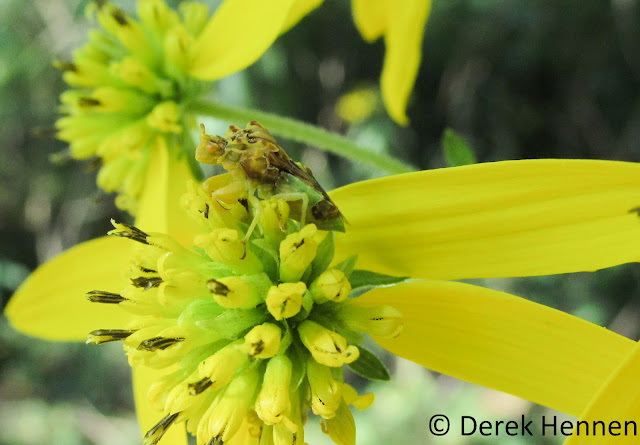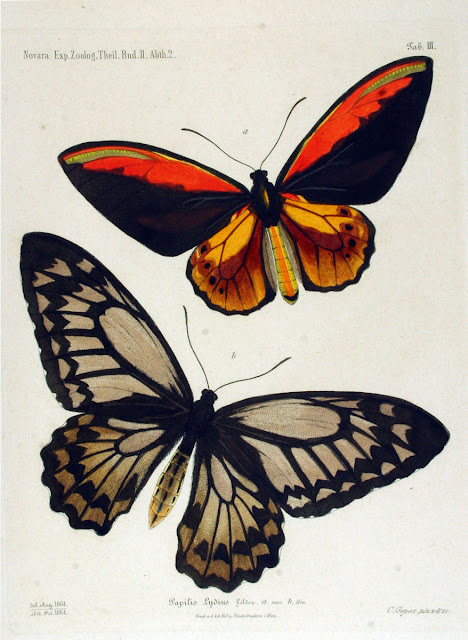Summer's starting to wind down (despite the temperature still hovering around 90 degrees on a daily basis), and that means new insects are now starting to make their appearances. One of my favorite groups are the assassin bugs, family Reduviidae, and late summer happens to be one of the best times to study them. Ohio's most charismatic species reach adulthood during this time, including the wheel bug ( Arilus cristatus ) and the jagged ambush bugs (genus Phymata ). The ambush bugs are small, stout assassin bugs in the subfamily Phymatinae. The family contains three genera in North America, and the most commonly-seen ones are in the genus Phymata . The subfamily hasn't received as much study as the rest of the assassin bugs, so your best bet for identification is to check out BugGuide's page . Dan Swanson has done some great work to figure out how to identify the Phymata spp., but it can still be tough. A jagged ambush bug, Phymata sp., awaiting its next victim on wing




